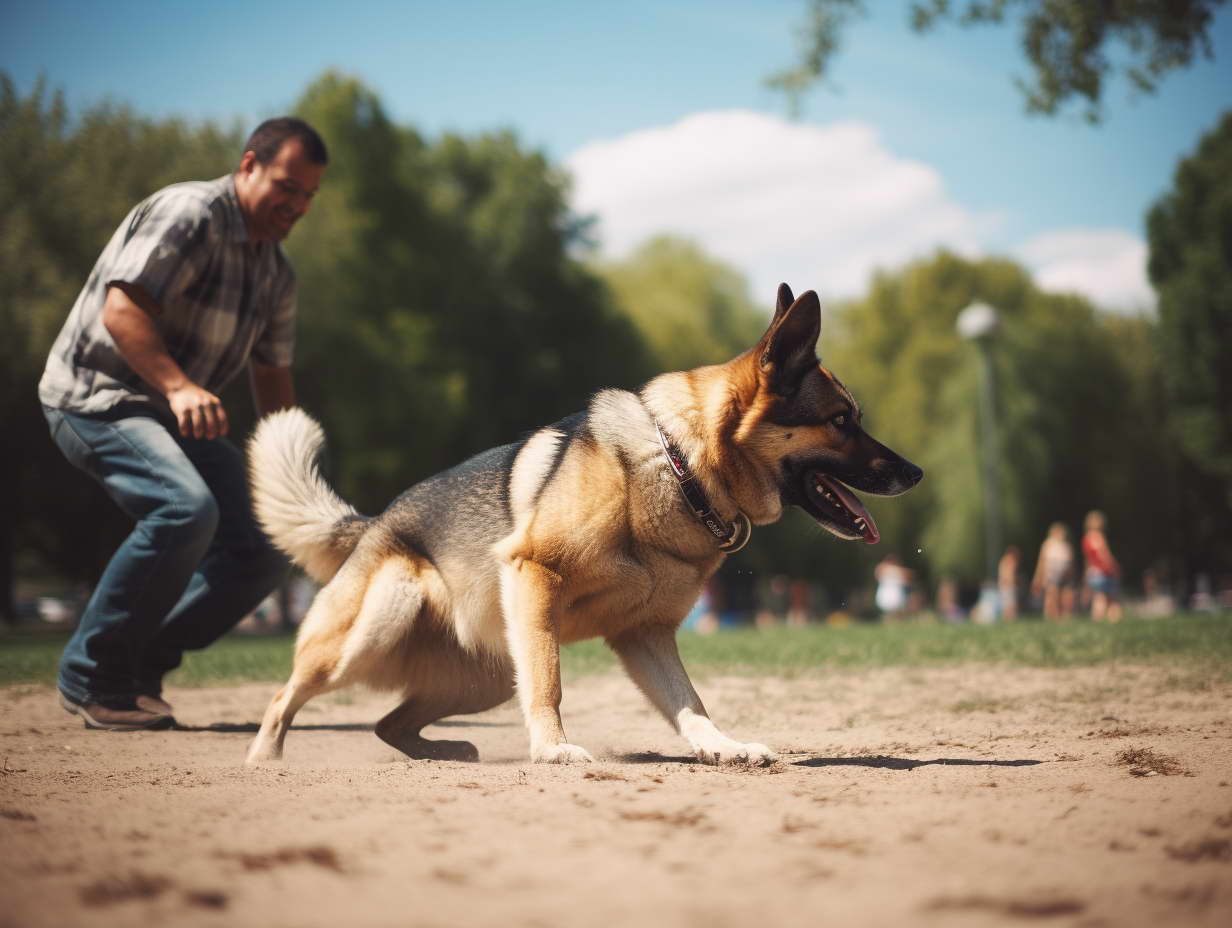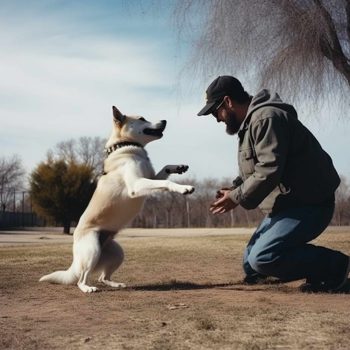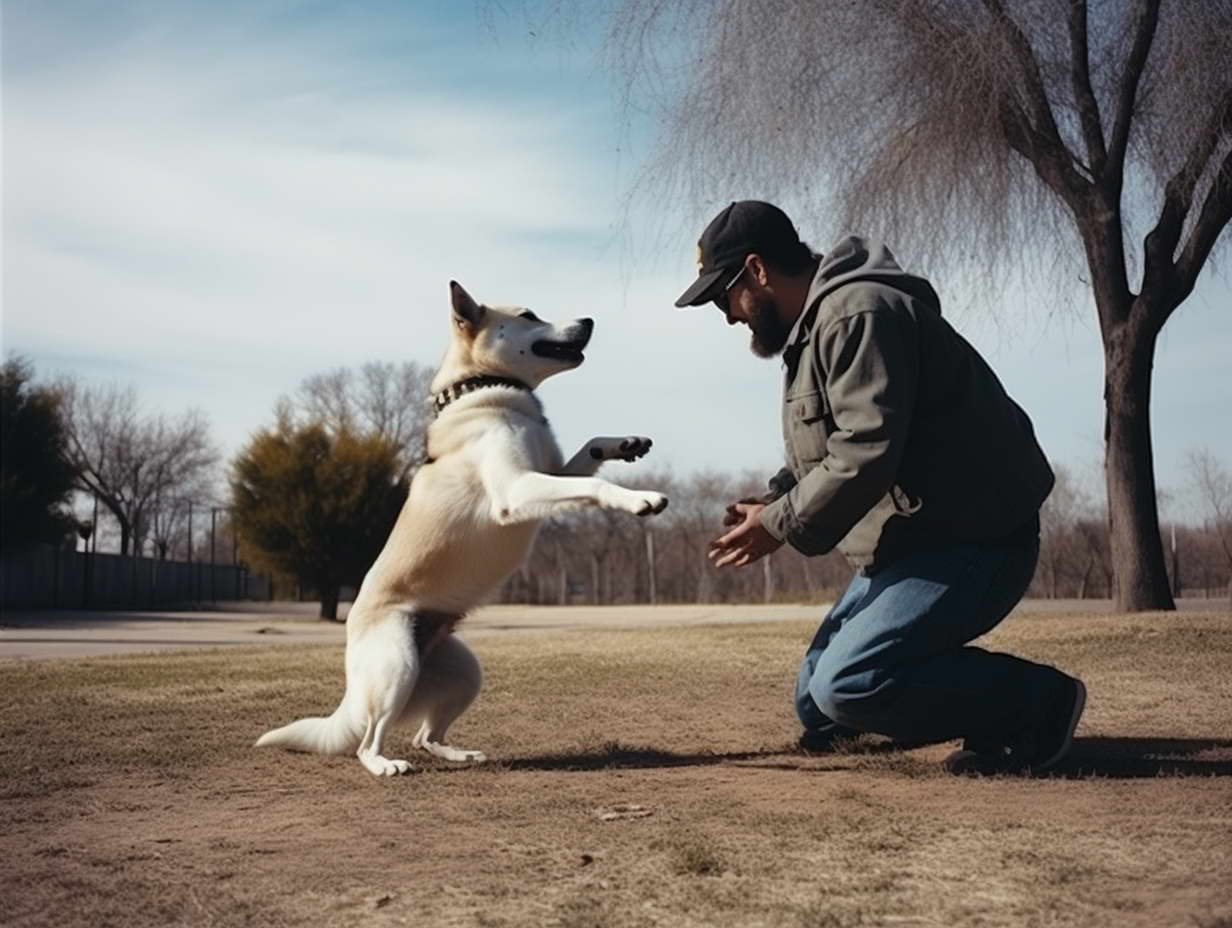Roll Over Dog Training: Teach Your Pup Impressive Tricks
Welcome to our comprehensive guide on roll over dog training! If you’re looking to teach your furry friend some impressive tricks, you’ve come to the right place. Roll over is a classic and crowd-pleasing command that showcases your dog’s intelligence and obedience. In this article, we’ll walk you through the step-by-step process of training your dog to perform a flawless roll over. From understanding the basics to troubleshooting common challenges, we’ve got you covered. So, let’s dive in and make your pup the star of the show!
Understanding Roll Over Dog Training
What is roll over dog training?
Roll over dog training is a command that teaches your dog to perform a full rotation, rolling from their back to their side and back to their original position. This trick requires coordination, balance, and a strong bond between you and your dog. It’s a fun and challenging command that impresses both friends and family.
Why is roll over a valuable trick to teach your dog?
Roll over is more than just a party trick. It provides mental stimulation for your dog and strengthens the bond between you. The training process engages their cognitive abilities and helps maintain their mental well-being. Additionally, mastering roll over demonstrates your dog’s obedience and responsiveness, which are essential for their overall training.
How can roll over benefit your dog’s mental and physical well-being?
Roll over dog training is a fantastic way to keep your pup mentally and physically active. By engaging in this training, your dog will exercise their body and mind, reducing the risk of boredom-related behavior problems. The mental stimulation provided by learning new tricks helps to keep their brains sharp and promotes a happy and fulfilled life.
Preparing for Roll Over Training
Creating a positive training environment
To ensure successful roll over training, it’s crucial to create a positive and distraction-free environment. Find a quiet space in your home or a fenced area in your backyard where you can focus on the training sessions without interruptions. Remove any potential hazards and keep the training area clean and comfortable for your pup.
Gathering essential training supplies
Before you begin roll over dog training, gather the necessary supplies. These include high-value treats that your dog loves, a clicker or a verbal marker, a treat pouch for easy access, and a comfortable mat or blanket for your dog to lie on during training sessions. Having these items on hand will make the training process smoother and more enjoyable for both you and your pup.
Establishing a strong bond with your dog
Building a strong bond with your dog is essential for successful roll over training. Spend quality time together, engage in play sessions, and reinforce positive behavior with praise and treats. By establishing trust and a solid foundation, your dog will be more motivated to learn and please you during the training process.
Step-by-Step Guide to Roll Over Dog Training
Teaching the basic commands: Sit, Down, and Stay
Before introducing the roll over command, it’s essential to ensure that your dog has a solid understanding of the basic commands: sit, down, and stay. These commands form the foundation for roll over training and make it easier for your dog to follow the instructions. If your dog hasn’t mastered these commands yet, spend some time reinforcing them before moving forward.
Introducing the roll over command
To introduce the roll over command, start by having your dog lie down in the “down” position. Hold a treat close to their nose and slowly move it towards their shoulder, guiding them into a roll. As they follow the treat with their nose, their body should naturally follow, completing the roll. Use a verbal cue like “roll over” or “spin” as they act. Remember to click or use a marker word and reward them with a treat when they complete the roll.
Using positive reinforcement and treats
Positive reinforcement is key to successful roll over training. Each time your dog performs the roll over correctly, praise them enthusiastically and reward them with a high-value treat. Consistency is crucial, so repeat the process multiple times during each training session. Over time, gradually reduce the reliance on treats and replace them with praise and petting as your dog becomes more proficient in the trick.
Breaking down the roll over motion into achievable steps
If your dog is struggling with the full roll over motion, you can break it down into smaller steps to make it more manageable. For example, you can start by teaching them to roll onto their side first before progressing to full rotation. This allows your dog to build confidence and gradually work towards the complete roll over. Remember to reward their progress at each stage and be patient throughout the training process.
Troubleshooting Roll Over Training Challenges
Dealing with resistance or fear
If your dog shows resistance or fear towards roll over training, it’s essential to approach the process with patience and understanding. Break down the training into smaller steps, provide plenty of positive reinforcement, and offer reassurance through gentle petting and soothing words. If your dog continues to exhibit fear or discomfort, consult a professional dog trainer for additional guidance and support.
Overcoming difficulties with coordination
Some dogs may struggle with the coordination required for the roll over command. In such cases, it’s helpful to practice on a non-slip surface or use a non-skid mat to provide better traction. Gradually increase the difficulty level as your dog becomes more comfortable and coordinated. With consistent practice and positive reinforcement, most dogs can overcome coordination challenges and perform an impressive roll over.
Adjusting the training pace for different breeds and ages
Different dog breeds and ages may require varying training paces. While some dogs may pick up the roll over command quickly, others may take more time to master it. Be patient and adjust the training pace to suit your dog’s individual needs. Older dogs may require shorter training sessions and more breaks, while puppies may have shorter attention spans. Tailor the training to your dog’s abilities and always end each session on a positive note.

Frequently Asked Questions (FAQs)
Can all dog breeds learn to roll over?
Yes, roll over training is suitable for all dog breeds. However, some breeds may find it easier to perform due to their natural flexibility and body structure. Smaller breeds or those with long bodies, such as Dachshunds, may find it more comfortable to roll over compared to larger breeds with stockier builds. With patience, consistency, and positive reinforcement, any dog can learn to roll over.
How long does it usually take to train a dog to roll over?
The time it takes to train a dog to roll over can vary depending on various factors, including the dog’s age, breed, and previous training experience. Some dogs may learn the trick within a few days, while others may take several weeks. Remember that each dog learns at their own pace, so be patient and celebrate small victories along the way.
Is roll over training suitable for older dogs?
Yes, roll over training is suitable for older dogs. However, it’s important to consider any physical limitations or health conditions your dog may have. Consult with your veterinarian before engaging in any physical training to ensure it’s safe for your older dog. Adapt the training to their abilities and provide plenty of breaks and rewards to keep them motivated and comfortable.
Can I teach my dog multiple tricks simultaneously?
While it’s possible to teach your dog multiple tricks simultaneously, it’s generally more effective to focus on one trick at a time. This allows your dog to fully grasp and master each command before moving on to the next. Once your dog has successfully learned roll over, you can start introducing other tricks, such as shake, play dead, or spin. Remember to always prioritize consistency and positive reinforcement in your training sessions.
What if my dog refuses to perform the roll over?
If your dog refuses to perform the roll over, it may be due to various reasons such as fear, discomfort, or confusion. Evaluate the training environment for any potential stressors or distractions and make adjustments as necessary. Break down the training into smaller steps and reinforce each stage to build confidence and understanding. If your dog continues to resist, consult a professional dog trainer for guidance.
Are there any alternative methods to train roll over?
Yes, there are alternative methods to train roll over. Some trainers prefer to use a shaping technique where the dog is rewarded for small incremental movements towards the final roll over position. This method allows the dog to figure out the desired behavior on their own and encourages problem-solving skills. Consult with a professional dog trainer to determine the best training approach for you and your dog.
Conclusion
Roll over dog training is an exciting and impressive trick that can be taught to any dog with patience, consistency, and positive reinforcement. By following the step-by-step guide provided in this article, you’ll be well on your way to teaching your pup this crowd-pleasing command. Remember to create a positive training environment, establish a strong bond with your dog, and celebrate their progress throughout the training process. With dedication and love, your furry friend will master the roll over and bring joy to everyone they meet.


Leave a Reply